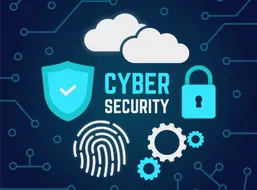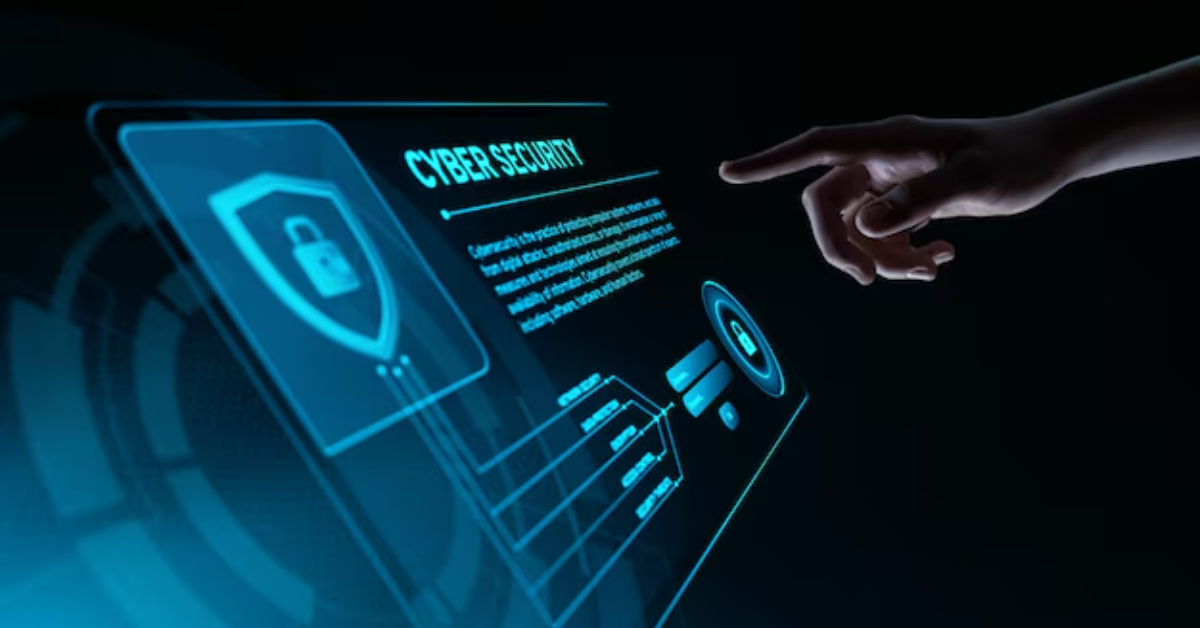Top Cybersecurity Interview Questions and Answers
1. What is Cybersecurity?
Cybersecurity refers to the practice of protecting systems, networks, and programs from digital attacks, unauthorized access, or damage. These attacks often aim to access, change, or destroy sensitive information, interrupt business processes, or extort money from users. Cybersecurity involves tools, technologies, and strategies to ensure data confidentiality, integrity, and availability.
2. What is the CIA Triad in Cybersecurity?
The CIA Triad stands for Confidentiality, Integrity, and Availability.
- Confidentiality: Ensures sensitive information is accessed only by authorized individuals.
- Integrity: Protects data from being altered without authorization.
- Availability: Ensures data and resources are available when needed by authorized users.
3. What is the difference between Vulnerability, Threat, and Risk?
- Vulnerability: A weakness in a system that can be exploited.
- Threat: A potential danger that exploits vulnerabilities.
- Risk: The likelihood and impact of a threat exploiting a vulnerability.
4. What is Penetration Testing?
Penetration Testing is a simulated cyber-attack conducted to identify security vulnerabilities in a system, application, or network. Security professionals, often called ethical hackers, mimic real-world attack techniques to uncover vulnerabilities before malicious attackers exploit them.
5. What is the difference between Black Hat, White Hat, and Grey Hat Hackers?
- Black Hat Hackers: Malicious hackers who exploit vulnerabilities for personal gain.
- White Hat Hackers: Ethical hackers who find and fix vulnerabilities legally.
- Grey Hat Hackers: Operate between legal and illegal hacking but do not exploit vulnerabilities for personal gain.
6. What is Multi-Factor Authentication (MFA)?
MFA is a security mechanism requiring users to provide two or more verification factors to gain access to a system. Examples include:
- Password (Something you know)
- OTP on mobile (Something you have)
- Biometric scan (Something you are)
7. What is Phishing?
Phishing is a cyber-attack where attackers pose as legitimate entities to trick individuals into revealing sensitive information, such as login credentials or financial data, typically through emails, fake websites, or SMS.
8. What is Ransomware?
Ransomware is a type of malware that encrypts a victim’s data and demands payment (ransom) to restore access. Notorious examples include WannaCry and CryptoLocker.
9. What is Social Engineering?
Social engineering manipulates individuals into divulging confidential information or performing actions that compromise security. Common methods include phishing, baiting, and pretexting.
10. What is a Firewall?
A firewall is a security system that monitors and controls incoming and outgoing network traffic based on predefined rules. It serves as a barrier between a trusted internal network and untrusted external sources.
11. What is the difference between Symmetric and Asymmetric Encryption?
- Symmetric Encryption: Uses the same key for both encryption and decryption (e.g., AES).
- Asymmetric Encryption: Uses a public key for encryption and a private key for decryption (e.g., RSA).
Symmetric is faster, while asymmetric is more secure for key distribution.
12. What is a DDoS Attack?
A Distributed Denial of Service (DDoS) attack overwhelms a system, server, or network with massive traffic from multiple sources, rendering it unavailable to users. Tools like botnets are often used in such attacks.
13. What is SSL/TLS?
SSL (Secure Sockets Layer) and TLS (Transport Layer Security) are cryptographic protocols that provide secure communication over networks, primarily used in HTTPS to encrypt web traffic.
14. What is the Principle of Least Privilege (PoLP)?
The Principle of Least Privilege ensures that users or systems have only the minimum level of access or permissions necessary to perform their tasks, reducing potential damage from compromised accounts.
15. What is Two-Factor Authentication (2FA)?
2FA is a subset of MFA that requires two verification methods, typically:
- Password (something you know)
- OTP or authentication app (something you have)
16. What is SQL Injection?
SQL Injection is a web attack where malicious SQL code is inserted into database queries, potentially accessing, modifying, or deleting sensitive data.
17. What is a Zero-Day Vulnerability?
A Zero-Day Vulnerability is a security flaw unknown to the software vendor. Hackers exploit it before a fix is released, posing a significant risk.
18. What are Intrusion Detection Systems (IDS) and Intrusion Prevention Systems (IPS)?
- IDS: Monitors network traffic for suspicious activities and alerts administrators.
- IPS: Proactively blocks detected malicious traffic to prevent security breaches.
19. What is a Security Token?
A security token is a physical or digital device used to authenticate a user. Examples include hardware tokens, smart cards, or software tokens (like Google Authenticator).
20. What is a Honeypot in Cybersecurity?
A Honeypot is a decoy system designed to attract cyber attackers, allowing security professionals to study attack methods and improve defenses.
21. What is Network Sniffing?
Network sniffing involves monitoring and capturing network packets to analyze data being transmitted over the network. Tools like Wireshark are commonly used.
22. What is BYOD Security?
BYOD (Bring Your Own Device) security involves securing personal devices used for work purposes to prevent unauthorized access and data breaches.
23. What is Endpoint Security?
Endpoint security involves protecting end-user devices like computers, laptops, and mobile devices from cyber threats using tools like antivirus software, firewalls, and endpoint detection and response (EDR).
24. What is Cyber Threat Intelligence (CTI)?
Cyber Threat Intelligence refers to gathering and analyzing data about potential or existing cyber threats to proactively defend against attacks.
25. What are the types of Malware?
- Virus: Attaches to files and spreads.
- Worm: Self-replicates and spreads across systems.
- Trojan: Disguises as legitimate software.
- Ransomware: Encrypts data and demands ransom.
- Spyware: Steals sensitive information.
26. What is a Security Breach?
A security breach occurs when unauthorized individuals gain access to secure systems, data, or networks, often leading to data leaks or damage.
27. What is the difference between Authentication and Authorization?
- Authentication: Verifying a user's identity (e.g., password, biometrics).
- Authorization: Granting access permissions based on user identity and roles.
28. What is a Man-in-the-Middle (MitM) Attack?
A MitM attack occurs when an attacker intercepts and potentially alters communication between two parties without their knowledge.
29. What are Security Policies?
Security policies are a set of rules and guidelines designed to protect organizational assets, ensure compliance, and minimize risks.
30. What is a Security Audit?
A security audit is an assessment of an organization’s information security infrastructure, policies, and practices to identify vulnerabilities and ensure compliance.
31. What is Data Loss Prevention (DLP)?
DLP is a strategy and technology used to prevent unauthorized access, sharing, or leakage of sensitive data, both in transit and at rest.
32. What are Common Cybersecurity Frameworks?
- NIST: National Institute of Standards and Technology
- ISO 27001: International standard for information security
- CIS Controls: Center for Internet Security best practices
33. What is Cryptography?
Cryptography is the practice of securing communication through encryption and decryption. It ensures confidentiality, integrity, and authentication of data.
34. What is a Patch?
A patch is a software update released to fix vulnerabilities, bugs, or improve security and functionality.
35. What are Botnets?
Botnets are networks of infected devices controlled remotely by cybercriminals to launch coordinated attacks, such as DDoS.
36. What is Identity and Access Management (IAM)?
IAM manages and controls user identities and their access to systems, networks, and data, ensuring only authorized individuals have appropriate access.
37. What is the OWASP Top 10?
The OWASP Top 10 is a list of the most critical web application security risks, including SQL Injection, Cross-Site Scripting (XSS), and Broken Authentication.
38. What is a VPN (Virtual Private Network)?
A VPN encrypts internet traffic and masks the user's IP address, ensuring secure communication and protecting against eavesdropping.
39. What is Steganography?
Steganography is the practice of hiding information within another file, such as embedding text within an image, for secure communication.
40. What is Brute Force Attack?
A Brute Force Attack involves systematically trying every possible password combination to gain unauthorized access.
41. What is Cross-Site Scripting (XSS)?
Cross-Site Scripting (XSS) is a web security vulnerability that allows attackers to inject malicious scripts into trusted websites. It can steal user sessions, redirect users, or deface web pages. There are three main types: Stored XSS, Reflected XSS, and DOM-Based XSS.
42. What is Cross-Site Request Forgery (CSRF)?
CSRF is an attack where an authenticated user is tricked into performing an action they did not intend to, such as transferring funds or changing account settings. It typically happens via malicious links or forms.
43. What is Threat Modeling?
Threat modeling identifies, prioritizes, and mitigates potential threats in a system. It involves analyzing security risks, vulnerabilities, and potential attack paths to ensure proactive security measures.
44. What is Security Information and Event Management (SIEM)?
SIEM is a cybersecurity tool that collects, analyzes, and correlates security logs from different systems and applications to detect and respond to security threats in real-time.
45. What is the difference between IDS and Firewalls?
- IDS: Monitors and alerts on suspicious activities but cannot block traffic.
- Firewall: Acts as a gatekeeper, blocking or allowing traffic based on predefined rules.
46. What is a Cyber Kill Chain?
The Cyber Kill Chain is a model developed by Lockheed Martin that describes the stages of a cyber attack:
- Reconnaissance
- Weaponization
- Delivery
- Exploitation
- Installation
- Command and Control
- Actions on Objectives
47. What are Common Phishing Techniques?
- Spear Phishing: Targeted phishing at individuals.
- Whaling: Targeting high-profile individuals.
- Clone Phishing: Duplicating legitimate messages.
48. What is Network Segmentation?
Network segmentation divides a network into smaller sub-networks to reduce attack surfaces, improve performance, and contain potential breaches.
49. What is Data Encryption at Rest and in Transit?
- At Rest: Encrypts data stored on disks, databases, or backups.
- In Transit: Encrypts data while being transferred over networks.
50. What is Security Hardening?
Security hardening involves securing systems by reducing vulnerabilities, disabling unnecessary services, updating software, and applying best security practices.
51. What is an Insider Threat?
An insider threat refers to risks posed by employees, contractors, or trusted individuals who misuse their access to systems or data, either maliciously or accidentally.
52. What is Endpoint Detection and Response (EDR)?
EDR is a cybersecurity solution that continuously monitors and analyzes endpoint activities, detects malicious behavior, and provides threat response capabilities.
53. What is the difference between Worms and Viruses?
- Worms: Self-replicate and spread across networks without human intervention.
- Viruses: Require a host file and human action to spread.
54. What is Patch Management?
Patch management involves regularly updating software and systems to fix vulnerabilities, bugs, and improve functionality.
55. What is a Security Token?
A security token is a hardware or software device used for authentication and secure access to systems.
56. What are Common Cybersecurity Attack Vectors?
- Phishing
- Malware
- Ransomware
- Social Engineering
- Exploiting Vulnerabilities
57. What is DNS Spoofing?
DNS Spoofing is an attack where fake DNS records are inserted into a DNS resolver's cache, redirecting users to malicious websites.
58. What is Secure Coding?
Secure coding is the practice of writing code with security best practices to prevent vulnerabilities like SQL Injection and XSS.
59. What is Zero Trust Architecture?
Zero Trust assumes that no one, whether inside or outside the network, is trusted by default. Access is verified at every stage.
60. What is Digital Forensics?
Digital forensics involves investigating cybercrime by collecting, analyzing, and preserving digital evidence for legal purposes.
61. What is a Security Policy Framework?
A Security Policy Framework is a set of guidelines and procedures an organization follows to protect its systems and data.
62. What is a Privilege Escalation Attack?
Privilege escalation exploits vulnerabilities to gain elevated access to systems or data.
63. What is Social Engineering Toolkit (SET)?
SET is an open-source penetration testing framework designed for social engineering attacks, like phishing or credential harvesting.
64. What is a Rootkit?
A rootkit is malicious software that hides its presence while granting attackers administrative-level control over a compromised system.
65. What is Role-Based Access Control (RBAC)?
RBAC restricts system access based on user roles, minimizing unnecessary privileges.
66. What is a Security Breach vs. Data Leak?
- Security Breach: Unauthorized access to a system.
- Data Leak: Unauthorized exposure of sensitive data.
67. What is Two-Way SSL Authentication?
In Two-Way SSL, both client and server authenticate each other's certificates to establish a secure connection.
68. What is an Access Control List (ACL)?
ACL is a list of rules that control network traffic by permitting or denying access to resources.
69. What is a Hash Function in Cybersecurity?
A hash function converts input data into a fixed-size string, ensuring data integrity. Examples: SHA-256, MD5.
70. What is Key Management?
Key management involves generating, storing, and securely distributing encryption keys.
71. What is an Air-Gapped Network?
An air-gapped network is physically isolated from other networks, often used in highly sensitive environments.
72. What is a Cybersecurity Incident Response Plan (IRP)?
An IRP is a documented plan outlining procedures for detecting, responding to, and recovering from security incidents.
73. What are False Positives and False Negatives in Security?
- False Positive: Legitimate activity flagged as malicious.
- False Negative: Malicious activity not detected.
74. What is a Security Sandbox?
A sandbox is an isolated testing environment used to analyze potentially malicious software without affecting the main system.
75. What is a Penetration Testing Lifecycle?
- Planning and Reconnaissance
- Scanning
- Exploitation
- Post-Exploitation
- Reporting
76. What is Social Engineering Awareness Training?
Social engineering awareness training educates employees about tactics used by attackers, such as phishing, pretexting, and baiting. Training helps individuals recognize and avoid falling victim to these schemes.
77. What is an Advanced Persistent Threat (APT)?
An APT is a prolonged and targeted cyberattack where an attacker gains unauthorized access to a network and remains undetected for an extended period to steal sensitive data or monitor activities.
78. What is Cybersecurity Compliance?
Cybersecurity compliance ensures that an organization adheres to regulatory and industry-specific security standards, such as GDPR, HIPAA, or PCI DSS, to protect sensitive data.
79. What are the Common Cybersecurity Metrics?
- Number of detected vulnerabilities
- Time to detect/respond to threats
- Incident response time
- Compliance adherence rate
- User awareness training completion
80. What is a Security Vulnerability Assessment?
A vulnerability assessment identifies, quantifies, and prioritizes security vulnerabilities in systems, networks, or applications to mitigate potential risks.
81. What is the Difference Between a Threat Actor and a Threat Vector?
- Threat Actor: An individual or group responsible for carrying out cyberattacks.
- Threat Vector: The method or pathway used by a threat actor to exploit vulnerabilities (e.g., phishing emails, unpatched software).
82. What is DNS Security (DNSSEC)?
DNSSEC (Domain Name System Security Extensions) protects DNS data integrity and authentication by using cryptographic signatures, preventing DNS spoofing and cache poisoning.
83. What is an Exploit Kit?
An exploit kit is a software toolkit used by cybercriminals to exploit known vulnerabilities in software, often used for distributing malware.
84. What is a Cybersecurity Maturity Model?
A cybersecurity maturity model measures an organization's security readiness and improvement over time, often rated from basic to advanced security maturity levels.
85. What is Red Team vs. Blue Team in Cybersecurity?
- Red Team: Offensive security professionals simulate real-world attacks.
- Blue Team: Defensive professionals monitor, detect, and respond to attacks.
86. What is Security Awareness Training?
Security awareness training educates employees about security risks, phishing attacks, password hygiene, and best practices to prevent cyber threats.
87. What is Encryption Key Rotation?
Key rotation involves regularly changing encryption keys to limit the exposure of data if a key is compromised.
88. What is Cyber Insurance?
Cyber insurance provides financial protection to organizations against losses from cyber incidents, including data breaches, ransomware attacks, and business interruption.
89. What are Common Cloud Security Threats?
- Data breaches
- Insecure APIs
- Misconfigured cloud storage
- Insider threats
- Account hijacking
90. What is a Digital Certificate?
A digital certificate verifies the identity of an entity (e.g., a website or server) and enables secure communication through encryption.
91. What is Network Access Control (NAC)?
NAC restricts unauthorized devices from accessing a network and ensures compliance with security policies before granting access.
92. What is Malware Analysis?
Malware analysis is the process of examining malicious software to understand its behavior, origin, and impact to develop mitigation strategies.
93. What is a Business Continuity Plan (BCP)?
A BCP outlines procedures to ensure critical business functions continue during and after a disaster or cybersecurity incident.
94. What is Role-Based Access Control (RBAC)?
RBAC restricts access to resources based on the roles of individual users within an organization, minimizing unnecessary permissions.
95. What is Cybersecurity Governance?
Cybersecurity governance establishes policies, frameworks, and oversight to ensure security measures align with business goals and regulatory requirements.
96. What is Credential Stuffing?
Credential stuffing involves attackers using stolen usernames and passwords from one breach to gain unauthorized access to accounts on other platforms.
97. What is a Cybersecurity Risk Assessment?
A cybersecurity risk assessment evaluates and identifies potential threats, vulnerabilities, and their impact on an organization’s assets.
98. What are Some Common Security Tools?
- Firewalls
- Antivirus software
- SIEM tools
- Penetration testing tools (e.g., Metasploit)
- Network scanners (e.g., Nmap)
99. What is Threat Hunting?
Threat hunting is the proactive search for cyber threats within a network, using threat intelligence, analytics, and manual investigation techniques.
100. What are Best Practices for Cybersecurity?
- Use strong and unique passwords.
- Enable multi-factor authentication (MFA).
- Regularly update and patch software.
- Conduct regular security audits.
- Provide employee security training.







